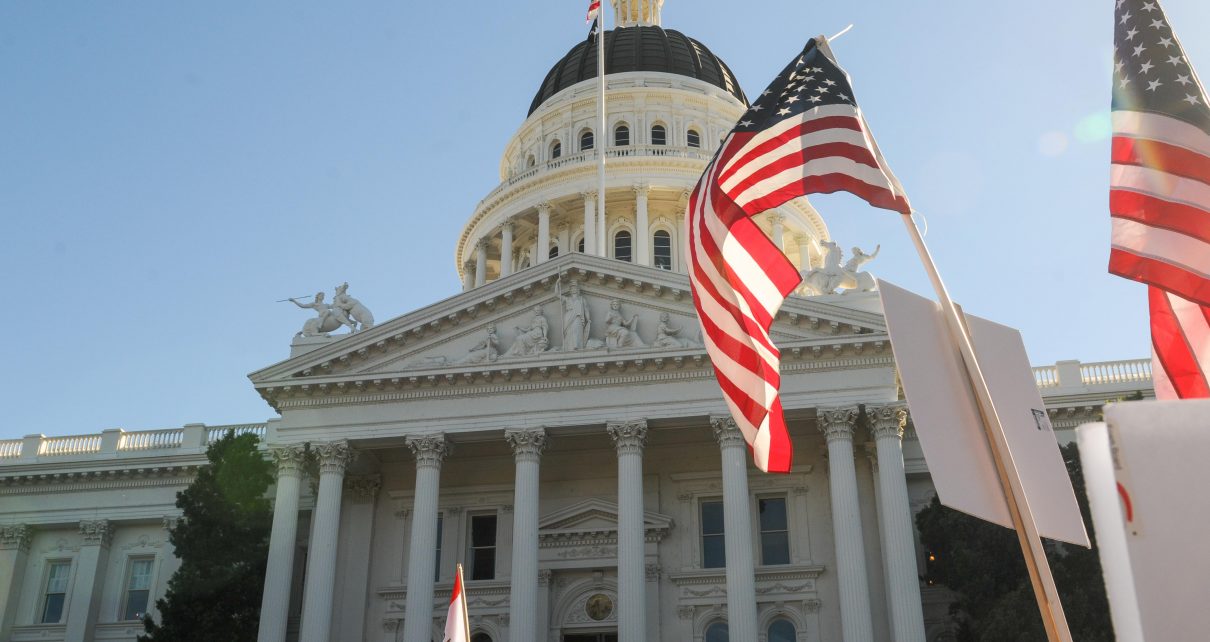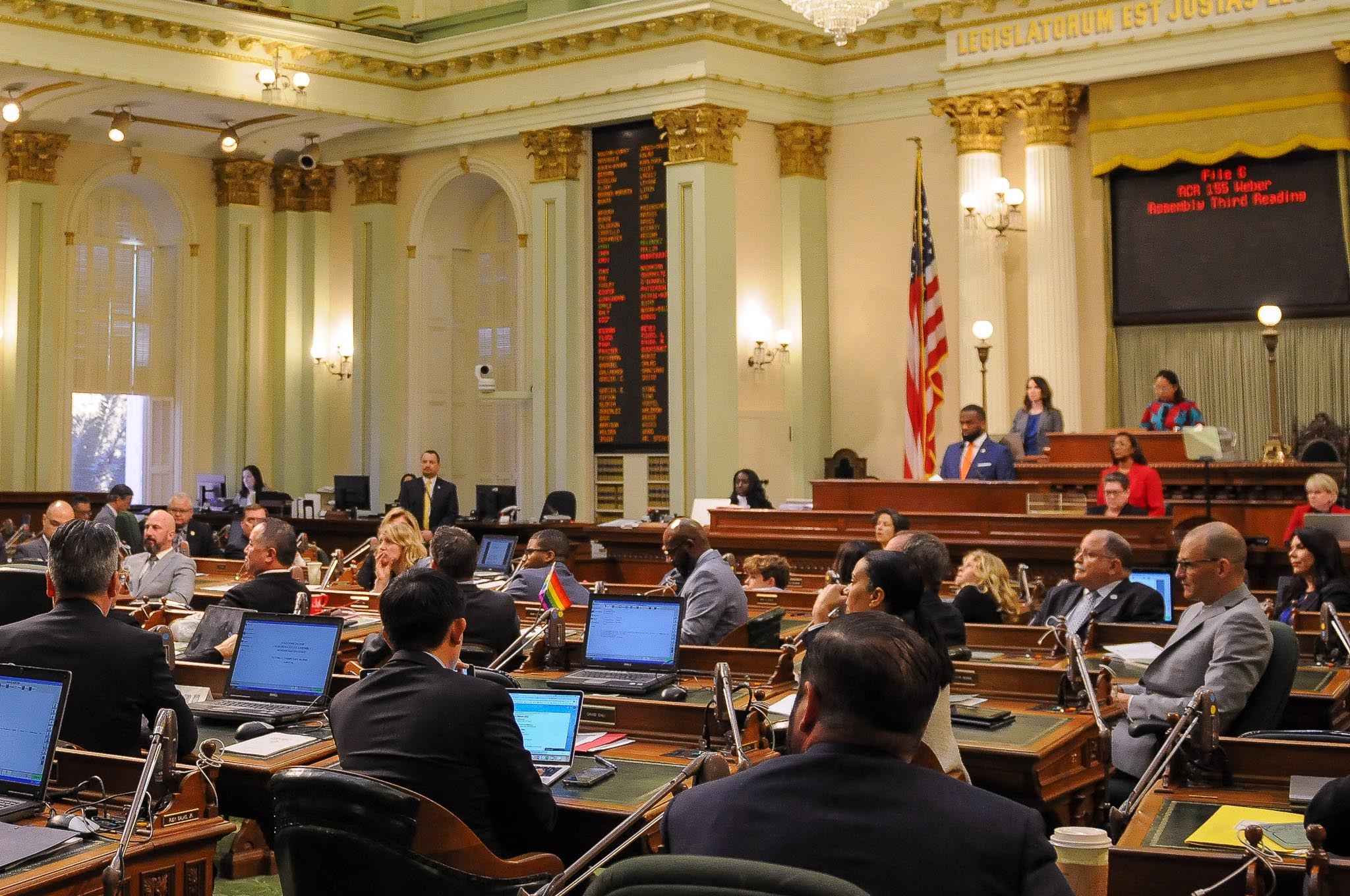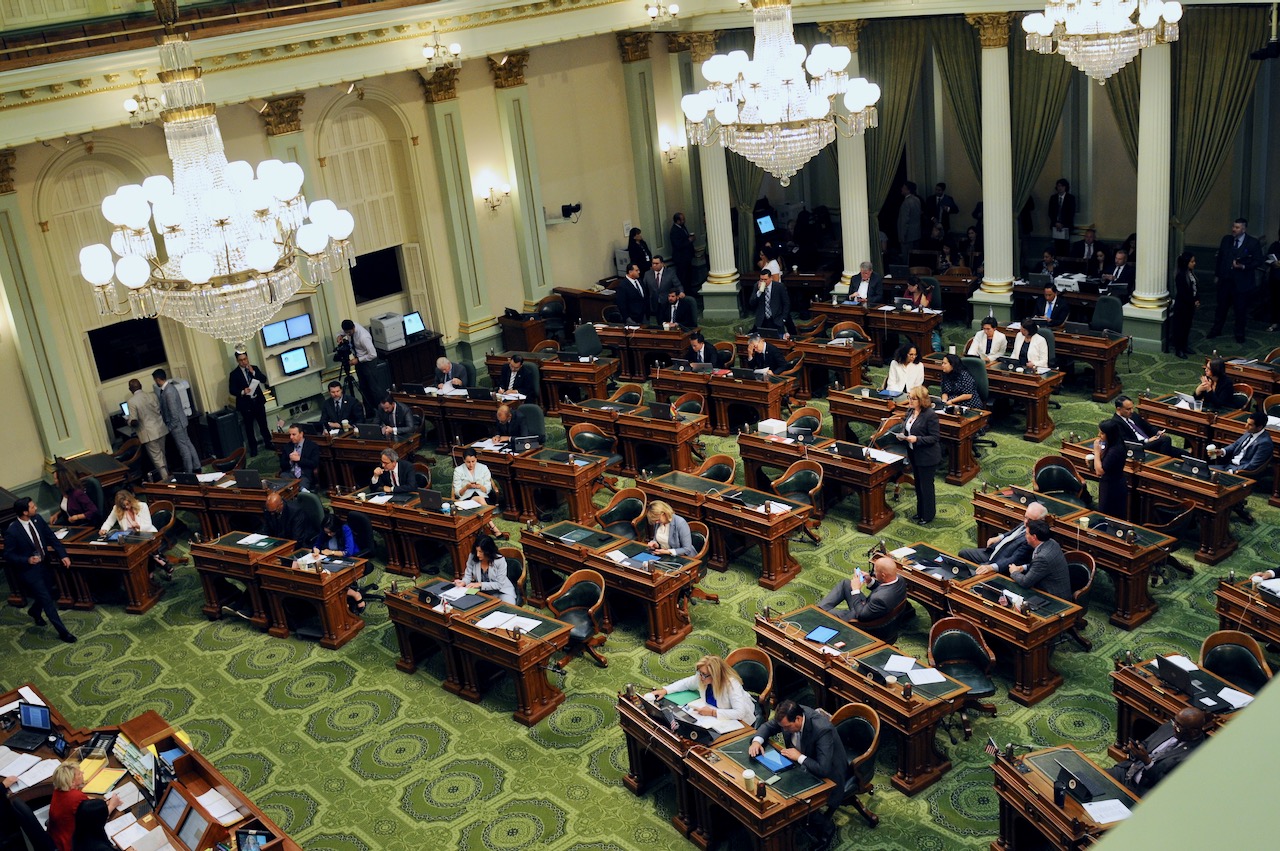
Sponsoring a Bill in the California Legislature
Realistically, it means the bill is truly your responsibility
By Chris Micheli, October 19, 2023 2:45 am
By Ray LeBov and Chris Micheli
While supporting or opposing a bill, or multiple bills, can often be a difficult task for a lobbyist, having a client who is the sponsor of a bill can be even more challenging. Why? Because you the lobbyist, as well as your client, will need to effectively be an adjunct of the legislator and their staff. A lobbyist whose client is sponsoring a bill needs to fully appreciate the amount of work that often goes into being a bill sponsor.
What does being a bill sponsor mean? Realistically, it means the bill is truly your responsibility. This translates into having to do much more work than is involved in supporting or opposing a bill. Often, the lobbyist will be responsible for most of what goes into getting the bill through the legislative process.
Pre-Introduction of the Bill
Ask yourself, what is the client’s issue or problem to be solved? What due diligence is required? The following are some of the major tasks that generally are the responsibility of the bill sponsor:
- Writing a fact sheet
- Drafting the bill language
- Researching the problem/issue to be addressed and its potential solution
- Talking with relevant stakeholders
- Meeting with policy and fiscal committee consultants
- Meeting with Department of Finance and the Governor’s Office
- Meeting with the relevant executive branch agency
Introduction of the Bill
Deciding which legislator to ask to be the author of your bill is one of the most complex, critical and important tasks you will face. There are many factors that must go into your decision. And because you may not succeed in getting your first-choice author, it is important to identify options.
You will also need to finalize the bill language with Legislative Counsel; finalize the fact sheet with the author’s office; and, find out where the bill is likely to be referred by the Rules Committee in the house of origin.
Preliminary Issues
At the outset you must clearly identify the problem to be addressed and a proposed legislative solution. Ask yourself the following questions:
- Does your solution need a legislative or regulatory fix or are other approaches preferable?
- Have you precisely identified and articulated the problem?
- What evidence do you have that your proposed legislation is needed?
An essential issue to address at this stage, because the author and certainly the committee staff will ask you, is whether there are better alternatives to legislation (e.g., litigation, negotiation, education, regulation, ballot measure)? You may determine that one of those other courses of action is preferable.
In addition, in the course of justifying your legislative proposal during the course of the process, you will need to explain why any of the alternatives do not present a better solution. At a minimum, you will have to determine that the legislative route is the most efficient, quickest, and cost-efficient approach to justify your bill. This requires both an internal justification and an external justification. You may even need to do a side-by-side comparison of alternatives as part of your deliberations.
As with anything and everything you do in the legislative arena, you must “do your homework.” Among other things, this includes compiling a history of prior legislative or regulatory efforts, identifying potential supporters and opponents, consulting with people with knowledge of the issue and its history: committee staff, other lobbyists, and much more.
Doing your homework is critical for you and for your potential author. When asking an elected legislator to author your client’s bill you must be prepared for what will take place during the legislative process. Compile all of the relevant information you can gather because the author will need it; the committees that consider and vote on the bill will need it; your coalition will need it; and, you will need it.
It is also essential to review prior efforts and ask yourself the following:
- Why were they successful or not successful?
- What do you plan to do in the same way?
- What do you plan to do differently?
- When should you approach potential opponents?
- What is the best time to attempt to negotiate a favorable outcome?
Check-in with relevant policy committee staff, interest groups, and the Governor’s Administration. Doing your homework will give you a thorough sense of what will take place during the legislative process. For example, how difficult is the effort to enact the bill likely to be? Who will support it? Who will oppose it? How much will it cost?
If legislation is the best approach to solving your client’s problem, you must determine how to craft the legislation that would most appropriately accomplish that. Ask yourself the following questions:
- Do you have the knowledge to craft the legislative solution? If not, you will need to consult with others who have the requisite expertise. Your client may have such an internal expert or you may need to seek an external one.
- Do others in your industry or sector have the same problem?
- Can you work together on a proposed solution?
- Do those others have experts?
- Do you have someone to draft the proposed legislative language or should you leave producing the first draft to Legislative Counsel?
- Do you draft the full bill or just a concept measure in advance?
- Do you have or need alternative language?
The next aspects to consider are the human and fiscal resources that are available to you to support the effort. You must consider the following questions:
- Will this effort require just a bare-bones operation, or will you need to hire lobbyists, PR firm, grassroots, media, etc.?
- Is there a PAC budget?
- What sort of experts will be necessary to support this effort?
- Will there be a lobbying coalition?
- How many potential supporters are there?
- Is trade association activity possible?
- Is this a short-term effort or a long-term one?
The next major issue to consider is the roles that each of the members of your team (officers, staff, membership, volunteers, lobbyists) are likely to be called on to play. It is important that each member of your team has a clearly designated, assigned role and that everyone stays in their lane. Who is the best person to be in charge of the overall effort.? And the team needs to have goals and the means to determine whether they are being met.
A bill’s sponsor must assess the following: Are lobbyists needed for the advocacy effort? If so, would these be in-house, contract, or both? Does your organization have in-house capability? Are there existing lobbyists to handle the planned effort? If not, do you bring someone in-house? Or, do you contract for a lobbyist? Do you need more than one firm? Do you need a specialist? Do you need a lobbyist with certain relationships or certain expertise?
The next matter to address is identifying the best potential bill author for your sponsored bill. As noted, that assessment includes many factors to be identified and weighed. In addition, you will need back-up choices because you often do not get your first choice. There are many fundamental issues to address including the possibility of getting a member of the relevant policy committee to be the author. (See chapter 16 for an in-depth discussion of the range of considerations involved)
How should you pitch your bill to the best potential author? Obtaining an author is a usually a far more difficult and complex task than what is involved in advocating support of or opposition to a bill.
A lobbyist should have a thorough understanding of all aspects of the legislative process, including deadlines and potential hurdles that their sponsored bill may encounter. So, it is important for the lobbyist to review the rules governing the legislative process, including those found in the California Constitution, Government Code, Joint Rules, Assembly Rules, Senate Rules and Committee Rules
Familiarity with legislative publications, calendar and deadlines is also critical.
You should next devise a comprehensive game plan for getting your sponsored bill through the legislative process. Lobbying a bill does not involve a cookie-cutter approach. You cannot use the same strategy for every bill; each bill implicates unique dynamics. In fact, the dynamics are different for the same bill when you seek passage a second or third time.
It is important to map out the general strategy and tactics (i.e., your “game plan”), but also to understand even the best plans are likely to require revision during the process. It is also essential to develop a checklist of required tasks for a sponsored bill.
How do you and your client define success? At its most basic– did your sponsored bill get enacted or not? How do define success in a multi-year effort? How far did your bill travel in the process? How did you address the opposition? Also, in many instances getting a substantial part of your desired outcome constitutes a successful effort, given the immovable obstacles encountered.
Post-Introduction Activities
Once your sponsored bill has been introduced in the Assembly or Senate, bill referral to appropriate policy committee(s)is the next step. Will the referral be easy or will there be a fight over which committee(s) to send the bill to? Bill referrals are rarely controversial because the policy committee having subject matter jurisdiction is typically obvious. When multiple subjects are involved, a bill can be referred to more than one policy committee. Two questions for the lobbyist to consider:
- Would it matter which committee gets the bill first if there is to be a dual-referral?
- Is there a better committee for your bill? Can you get it single referred?
If your bill is controversial, or if you have major opposition, you should be prepared to negotiate with interested or affected parties. This usually starts pre-introduction or even pre-decision to introduce in many instances. Some of the questions that a lobbyist should pose include:
- What necessitates the negotiation?
- Does your side have leverage?
- With whom should you negotiate?
- Should there be a mediator or someone to bring interested parties together, such as the bill’s author, committee chair or staff, or the Administration?
- Are you looking for a win-win outcome? Or a win-lose outcome?
- Which side has the most power?
- Who has the most to gain or lose?
Bill content and lobbying approach negotiations with potential allies are often also necessary.
An issue to consider when entering negotiations is whether you start at a higher point with your introduced bill because you are likely to have to give something up during the process. Sometimes, however, that is not the ideal course because it can paint a target on the bill that can be hard to overcome, even with substantial amendments.
There are instances where a bill does not warrant negotiation; or only certain aspects of it will subject to negotiation.
You may need to consider using grassroots lobbying as part of your overall effort. Grassroots efforts can be very helpful, but can also backfire if viewed as “grass-tops” lobbying. Ask yourself whether grassroots involvement is necessary or appropriate. Is it something that you or your client can do internally? Is your client or employer equipped to do so? Can an association help out or do you need to hire a grassroots firm?
If grassroots lobbying is appropriate, what form(s) should it take? Letter writing, phone calls, emails? Capitol or district office visits? When is it the best time in the process to use grassroots: Right after the bill is introduced? When it is before the first committee? When the bill is on the Floor? Perhaps a combination of these will be advisable or necessary.
Pre-hearing committee work with, and lobbying of, policy and fiscal committee members and staff from both parties, is most critical for the lobbyist.
Even though most policy committee members have made up their minds before a committee hearing, testimony at the hearing can be important. For the lobbyist, that involves identifying their witness as well as the specific content of their testimony. Those are important decisions even though increased limitations are often placed on witnesses, regardless of the complexity of the bill involved.
Pre-hearing work matters considerably more than what typically happens at the hearing. Nonetheless, the lobbyist is charged with committee testimony preparation. Sometimes the public hearing can turn a vote or two, but in most instances, the committee hearing is just “for show.” The main issues are who will provide the testimony – lobbyist, client, trade association, etc. – and what message or messages should be delivered in about two minutes.
Media strategy can sometimes come into consideration, particularly for a hotly-contested or high-profile bill. Is it necessary to have media coverage? Will there be coverage regardless of what you or your client does? Would media attention for your bill help or hurt the lobbying effort?
Other media-related questions that need to be addressed include:
- Do you want “pro” media coverage for the bill?
- Do you want to prevent negative media coverage?
- Do you have internal resources to handle media or do you need an expert on contract?
- What do you want? LTE? Op-ed? Story?
- Which type(s) of media should be pursued – print, electronic, TV, radio?
Lobbying the floor is the next stage after successfully passing through the committee process. Only a handful of bills each year in the California Legislature actually fail passage on the Floor of the Senate or Assembly. As a result, the importance of floor lobbying has been diminished in recent years. Nonetheless, there are a few considerations to the lobbyist on a sponsored bill.
For example, how controversial is the bill? How close was the committee vote? One thing to discuss with the bill author and their staff is what points need to be made in floor statements. For example, should the author address opposition concerns? Also, do you need speakers on the Floor? If so, who might be impactful? In the second house, who will be the floor manager?
Lobbying the Governor’s Administration starts early in the process. This includes contacting the relevant department or agency, the Department of Finance, and the Governor’s Legislative Unit a t the various stages (e.g., while the bill is progressing and then a final check-in prior to the bill hitting the governor’s desk). Are there issues that can be addressed? Are there amendments to be taken? From the Department of Finance, what are the potential fiscal impacts?
Post-session Activities
If your bill failed passage or was vetoed, you must assess your tactical and strategic efforts. What did you learn that you can build on if your client wants to try again? Major bills or controversial measures often take multiple years and efforts to succeed. There are often necessary educational activities and you may need to negotiate a resolution if there is significant opposition to deal with for your sponsored bill.
The first year (i.e., the odd-numbered year) of the legislative session might be a good time to try a big bill or a controversial one because you can continue into the second year if your bill does not cross the finish line at the end of the first year. These are called “2-year bills” or properly “carryover bills.”
When you are assessing your efforts, ask yourself what you did right and what you did wrong. These answers will inform your evaluation of whether to try again with your client’s sponsored bill. Ask yourself whether there are issues to address before starting the lobbying effort again. Perhaps you will be able to negotiate amendments in advance (e.g., during the interim recess) and return for the second year of session with a finished bill that does not have opposition.
Also, it is a good idea to solicit feedback from others involved in the lobbying effort. Welcome constructive feedback and criticism from the Governor’s staff, executive branch agencies, committee staff; interest groups; and, colleagues. Try to get honest assessments of what was done well and what needs improvement.
Some additional considerations for trying again include timing and the language. For example, should you introduce the same bill or an amended version? Should you reintroduce the sponsored bill right away or delay for a year or two? Does your client have the resources to continue the lobbying efforts? Does your client have the desire or need to do so?
It may also make sense to wait for a new session and possible changes in the committee composition, for example, or even a change in Administration.
If your bill was signed into law, congratulations. However, there are still a few considerations to keep in mind. For example, do you need to prepare for a regulatory project? How do you want to inform people about the statute’s enactment?
If you have to prepare for regulatory action because the bill is not self-executing, there is likely to be a lot of work to be done with the executive branch agency or department that will go through the rulemaking process as part of its implementation responsibility. Does your statute need to be interpreted or implemented by a state agency or department? Does your sponsored bill contain implicit or explicit authority for an agency or department to adopt regulations? How extensive are the regulations that will be required?
Other chapters of this book covering the rulemaking process and regulatory advocacy focus your attention on the following questions: Does the implementing agency plan or anticipate a rulemaking project? Will you be able to work cooperatively with them? What can be done in advance of the formal rulemaking process commencing? Is the rulemaking relatively straightforward? Will it be a regular or emergency rulemaking?
Another consideration is promptly and appropriately informing your members or allies so they can adapt to the new context created by this new statute. As you might expect, education is important, particularly to those directly impacted by the law. Your client might want to consider sending a notice to interested parties or the regulated community. It is important to consider whether there is sufficient guidance out there for proper compliance with the new regulatory scheme. Your client may also need to educate the general public about the law change.
It is also essential to thank all those who helped in the successful legislative effort. Also consider whether there should be any public thank you efforts for legislators or others who played a role Your client should also let their employees and contractors know that their efforts are appreciated. There should also be recognition for coalition partners and consultants.
Finally, you may have to smooth things over with opponents. Hopefully, you did not alienate those with whom you regularly work. Ideally, you have a positive working relationship with colleagues so that everyone moves on despite their perceived defeat. But there may be instances where there are hurt feelings or bruised egos and you should give due consideration regarding how to handle those circumstances.
 Ray LeBov began working in Sacramento in 1975, when he was appointed as counsel to the Legislature’s Joint Committee on the Structure of the Judiciary. He served in various other legislative staff positions until 1991. Since 2006, Ray LeBov & Associates’ Capitol Seminars division has presented its Lobbying 101 and 201 seminars throughout the year in Sacramento and other locations, enabling some 2000 governmental advocacy and public affairs professionals.
Ray LeBov began working in Sacramento in 1975, when he was appointed as counsel to the Legislature’s Joint Committee on the Structure of the Judiciary. He served in various other legislative staff positions until 1991. Since 2006, Ray LeBov & Associates’ Capitol Seminars division has presented its Lobbying 101 and 201 seminars throughout the year in Sacramento and other locations, enabling some 2000 governmental advocacy and public affairs professionals.
- Interstate Depositions and Discovery Act - December 7, 2025
- Trial by the Court in California - December 7, 2025
- Enforcement of Labor Commissioner Judgments - December 6, 2025




